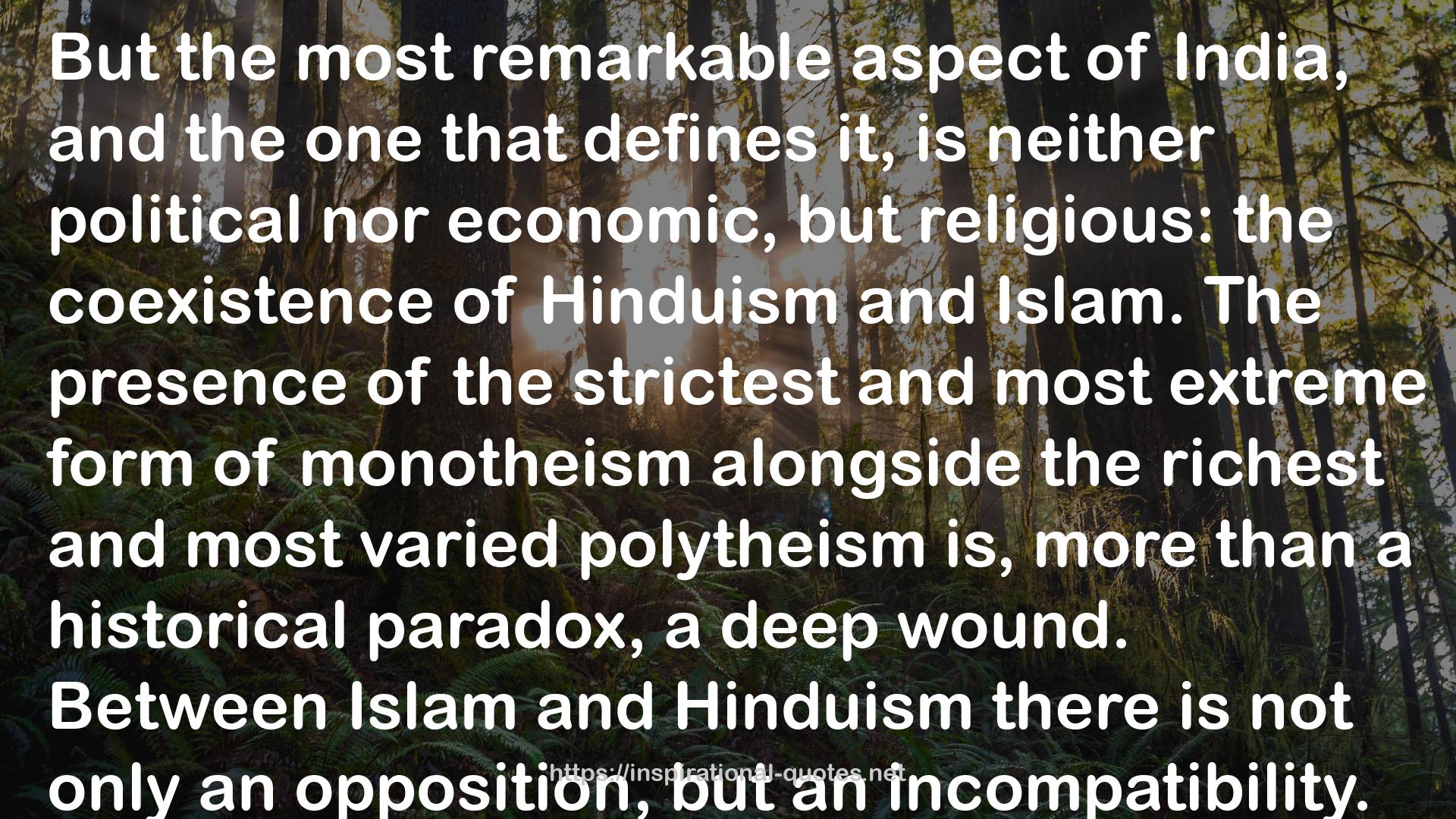" But the most remarkable aspect of India, and the one that defines it, is neither political nor economic, but religious: the coexistence of Hinduism and Islam. The presence of the strictest and most extreme form of monotheism alongside the richest and most varied polytheism is, more than a historical paradox, a deep wound. Between Islam and Hinduism there is not only an opposition, but an incompatibility. In one, the theology is rigid and simple; in the other, the variety of doctrines and sects induces a kind of vertigo. In one case, a creator god; in the other, the wheel of successive cosmic eras with its procession of gods and civilizations. India owes to Islam some sublime works of art, particularly in architecture and, to a lesser degree, in painting, but not a single new or original thought. .
Hinduism is a conglomeration of beliefs and rituals; although it lacks missionaries, its power of assimilation is immense. It does not know conversion in the Christian or Muslim sense, but it practices, with great success, appropriation. Like an enormous metaphysical boa, Hinduism slowly and relentlessly digests foreign cultures, gods, languages, and beliefs. Hinduism does not convert individuals; it absorbs communities and tribes, their gods and rites. "
― Octavio Paz , In Light of India
